
-
Find the right food for your petTake this quiz to see which food may be the best for your furry friend.Find the right food for your petTake this quiz to see which food may be the best for your furry friend.Featured products
 Adult 7+ Small & Mini Chicken & Brown Rice Recipe Dog Food
Adult 7+ Small & Mini Chicken & Brown Rice Recipe Dog FoodFor the unique nutritional needs of mature Small & Mini dogs
Shop Now Adult Small & Mini Lamb Meal & Brown Rice Recipe Dog Food
Adult Small & Mini Lamb Meal & Brown Rice Recipe Dog FoodFor the faster metabolism of Small & Mini dogs
Shop Now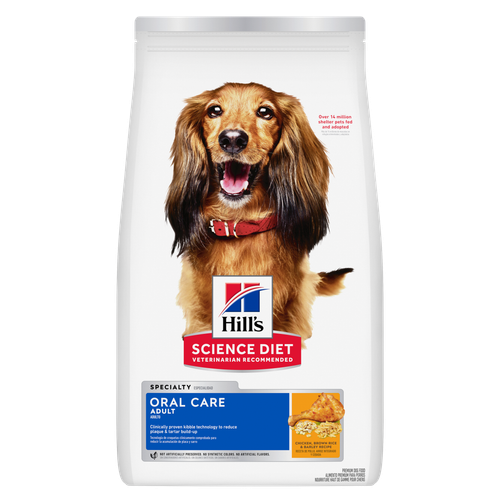 Hill's Science Diet Adult Oral Care Chicken, Brown Rice & Barley Recipe Dog Food
Hill's Science Diet Adult Oral Care Chicken, Brown Rice & Barley Recipe Dog FoodClinically proven kibble technology to reduce plaque & tartar build-up
Shop NowFeatured products Hill's Science Diet Adult Sensitive Stomach & Skin Dog Food
Hill's Science Diet Adult Sensitive Stomach & Skin Dog FoodHighly digestible recipe, gentle on stomachs. Nourishes skin & promotes a lustrous coat
Shop Now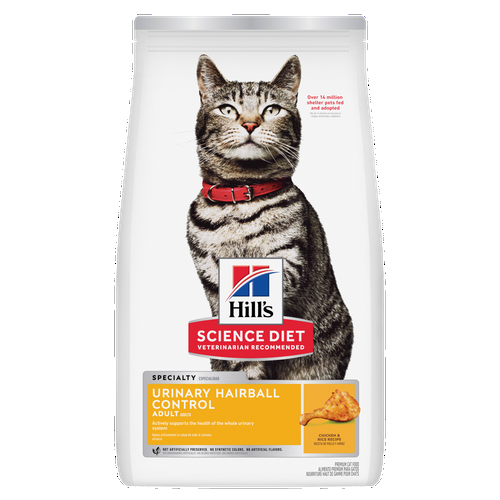 Adult Urinary Hairball Control Chicken & Rice Recipe Cat Food
Adult Urinary Hairball Control Chicken & Rice Recipe Cat FoodActively supports the health of the whole urinary system
Shop Now Adult Indoor Chicken Recipe Cat Food
Adult Indoor Chicken Recipe Cat FoodSupports energy level and beautiful fur in indoor cats
Shop Now -
Featured articles
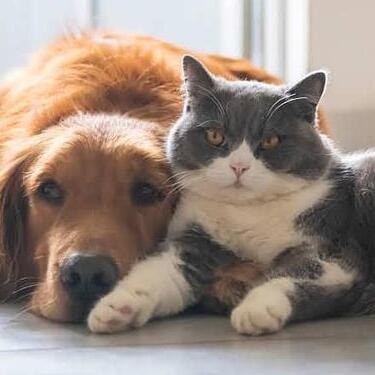 Easy DIY Dog & Cat Toys: Nine of Our Favorites
Easy DIY Dog & Cat Toys: Nine of Our FavoritesBrowse this comprehensive guide for several of our favorite DIY dog and cat toys that are sure to put a little pep in your pet's step.
Read More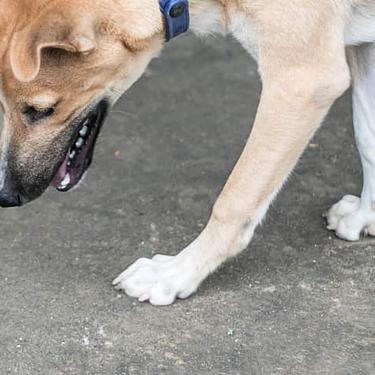 My Pet Ate a Lizard — What Should I Do?
My Pet Ate a Lizard — What Should I Do?Learn what to do if your pet eats a lizard, including whether they can be toxic and symptoms to keep an eye on when they've swallowed one.
Read More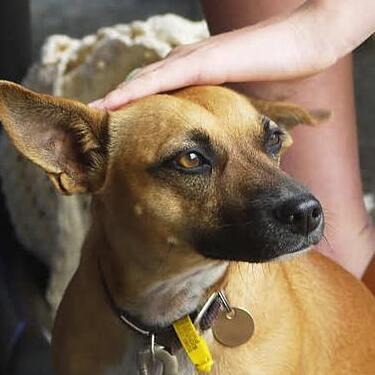 15 Pet-Friendly Cities Ideal for a US Road Trip
15 Pet-Friendly Cities Ideal for a US Road TripCheck out our list of pet-friendly U.S. cities that are excellent travel options, offering off-leash dog parks and pet-friendly restaurants & hotels.
Read More -


Thinking
You may notice that certain behaviors that used to come naturally to your pet have become more difficult. Specifically, you may notice your dog or cat:
- Gets lost in familiar locations such as your home or a favorite dog park
- Can’t figure out how to navigate through doors
- Gets stuck in corners
- Can’t figure out how to navigate around obstacles like your couch, a coffee table, or even a person
- Doesn’t seem to recognize familiar people or pets
- Doesn’t perform tasks that were previously familiar to him or her
Activity
Is your pet normally very active and playful? Are they typically content relaxing on the couch or lying in a warm patch of sun? It is important to think about what was normal for your furry friend so that you can recognize changes in their activity level. You might see that your pet is:
- Less interested in exploring their environment
- Staring or fixating on objects or people
- Excessively licking objects or people
- Sleeping more or less during the day
- Pacing or wandering around the house
Interactions
Your bond with your pet is very special and much of that bond depends on how you interact with one another. If your pet's cognitive function is declining, you may notice certain changes in how they interact with you including (but not limited to):
- No longer greeting you when you have been gone
- Less interest in spending time with you
- More interest in spending time with you or “clingy” behavior
- Signs of separation anxiety
- Irritability
Loss of control
One of the first and most important routines you established with your pet was likely their elimination routine. This is something that usually remains very constant throughout a dog or cat's life unless there are medical or cognitive changes. Your pet may suddenly be:
- Urinating or defecating in the house outside of a litter box
- Urinating or defecating in their crate or sleeping area
- Going outdoors to urinate or defecate then having accidents when they comes back inside
- Less likely to signal that they have to urinate or defecate then having accidents


Tasty Tips
Young pets may need several visits in their first year for vaccinations. Adult pets generally benefit from annual check-ups, while senior or special-needs pets might require more frequent visits.
Sleep-wake cycle
Your pet likely sleeps when you sleep and wakes up with you in the morning. As your pet ages, you may notice changes in their sleep habits that could indicate cognitive dysfunction. You may notice that your dog or cat is:
- Awake more at night
- Restless/sleeping fitfully
- Sleeping more during the day
How can you help your dog or cat?
If you notice any of the “TELL TAILS” signs of aging in your pet, schedule an appointment with your veterinarian. It is important to rule out any underlying medical conditions that may cause some of the same age-related signs before arriving at any conclusion.
Activity
Studies have shown that environmental enrichment and sensory stimulation positively affect cognitive function and may play a role in preserving cognitive abilities as your pet ages. Even if your dog or cat has slowed down a bit as they've aged, continue to take them for walks or encourage exercise (appropriate for their physical abilities) regularly. Provide them with plenty of toys. Food puzzles can stimulate your pet's brain and provide a treat for performing tasks. Despite the old saying, you can teach old dogs new tricks — cats too. Consider training your dog or cat to perform new tricks or tasks to keep their brain working hard.
The right nutrition
Research shows that nutrition affects how your pet’s cells function. The aging process is complex and involves specific changes to the cells. The right nutrition can help protect cells and protect against signs of aging. Help keep your 7+ dog or cat stay in the game with Hill’s® Science Diet® Youthful Vitality. This breakthrough nutrition is formulated with ingredients to help support your pet's ongoing vitality through increased activity, interaction and mobility.
Getting older doesn’t have to slow your pet down. If you recognize any of the “TELL TAILS” signs of aging in your dog or cat, consult with your veterinarian to determine the best action plan including nutrition.


One of our staff authors prepared this article for you
Related products

Improves everyday ability to get up & go

For the faster metabolism of Small & Mini dogs

Clinically proven kibble technology to reduce plaque & tartar build-up

For the unique nutritional needs of mature Small & Mini dogs
Related articles

Browse this comprehensive guide for several of our favorite DIY dog and cat toys that are sure to put a little pep in your pet's step.

Check out our list of pet-friendly U.S. cities that are excellent travel options, offering off-leash dog parks and pet-friendly restaurants & hotels.
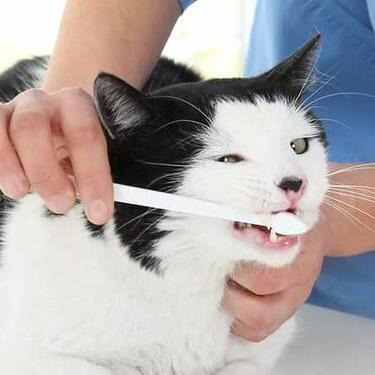
Learn about veterinary dental care for your pet, including deep teeth cleaning procedures, which can help your dog or cat maintain proper dental health.

Learn what to do if your pet eats a lizard, including whether they can be toxic and symptoms to keep an eye on when they've swallowed one.
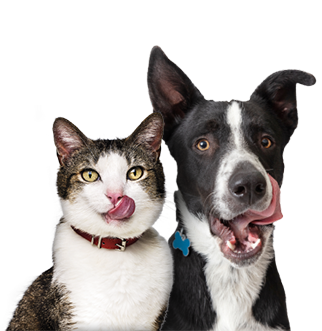
Put your pet on a diet without them knowing
Our low calorie formula helps you control your pet's weight. It's packed with high-quality protein for building lean muscles, and made with purposeful ingredients for a flavorful, nutritious meal. Clinically proven antioxidants, Vitamin C+E, help promote a healthy immune system.
Put your pet on a diet without them knowing
Our low calorie formula helps you control your pet's weight. It's packed with high-quality protein for building lean muscles, and made with purposeful ingredients for a flavorful, nutritious meal. Clinically proven antioxidants, Vitamin C+E, help promote a healthy immune system.

